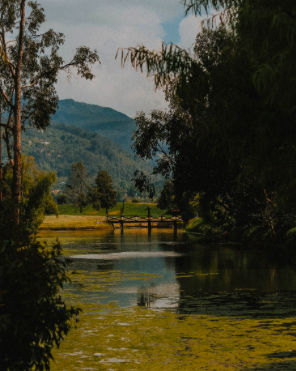BLUE-GREEN WAY is a program aiming to find innovative solutions for improving the environmental status of eutrophic and anoxic coastal ecosystems. In this context, the results of the conducted research are disseminated to society in order to raise awareness of environmental issues and promote greener practices.
Communicating and engaging the local and global community is an integrated part of the BLUE-GREEN WAY Project.
In restoration projects, it is vital to involve the young community in the process and reconcile the local population with the methods to be applied and the desired results. In this way, it will be possible to motivate active local groups of citizens and encourage them decisively in maintaining the positive effects of the actions for as long as possible.
Young people are the most emerging target group of such practices. Mainly because they tend to be more interested in environmental issues, and will face the environmental crisis in their lifetime. Moreover, most of the time young people are more willing to change their habits.
After all, young people are the ones suffering the consequences of ecosystem degradation in their daily lives, and they will be the ones who will enjoy the benefits of a successful restoration implementation.
Dissemination axes
The BLUE-GREEN WAY dissemination practices consist of four main axes:
- Living Labs
- Workshops
- Newsletters
- Social Media
- Articles in Regional Cooperation Magazine
Living Labs involve the local community in a restoration project to the existing environmental degradation situation, the implementation’s goals, and the environmental friendly solutions suggested. Also, the Project will organize educational environmental Workshops in collaboration with educational institutions, which will inform young people about the eutrophic restoration actions and guide them in measures to protect the natural ecosystem. The publication of the E-newsletters is another way to communicate the latest advances and the program’s current status to a broader community. Social media, such as Facebook, LinkedIn, Twitter and Instagram, are the most direct way to communicate daily changes and results. What is more, people interested in the program’s goals and point of view-via social media keep in touch with each other, communicate easily and directly and can join online events and webinars. Finally, thanks to Regional Cooperation Magazine, the BLUE-GREEN WAY has a memorable and formal place to develop thinking and implementation process every month.
Living Labs – Striving to connect
In the next period the Project will develop living labs targeted to inspire action aligned with local realities and lived experience and promote place-based environmental action, documenting sustainability efforts and learnings in the local context. Furthermore, developing inclusive insights on local environmental issues from various groups, connecting young people and building networks among diverse environmental pathways will undoubtedly strengthen the positive footprint of the Project. In that way, the BLUE-GREENWAY suggests reconnecting with our roots, exploring what is around us — current efforts, issues, and opportunities, near and far and using imagination and foresight to shape inclusive futures.


